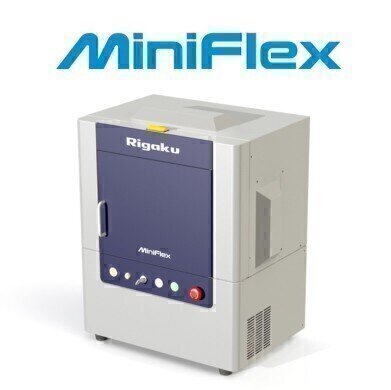Analytical Instrumentation
New 6th gen MiniFlex benchtop XRD for cost-effective petrochemical analysis
Jun 21 2017
Phase identification analysis using X-ray diffraction (XRD) is an important tool for mineralogy and corrosion analysis. A wide variety of samples - including rocks, scales, cements, cuttings, and muds - is routinely encountered in the oil drilling industry throughout the drilling process. XRD is an essential technology for analysis of these commonly identified solids in the oil field, as well as in the identification and reduction of scale build-up.
Additionally, combining the results of both X-ray fluorescence (XRF) and X-ray diffraction techniques enables better, more complete characterisation of crystalline samples. While elemental composition is determined by XRF, phase content and crystallographic information about how the various elements are joined together is only available through XRD.
For challenging qualitative and quantitative analyses of a broad range of samples, X-ray scientific, analytical and industrial instrumentation manufacturer Rigaku Corporation has announced the new sixth generation Rigaku MiniFlex benchtop XRD instrument.
The new MiniFlex™ X-ray diffractometer is a multipurpose analytical instrument that can determine: phase identification and quantification, percent (%) crystallinity, crystallite size and strain, lattice parameter refinement, Rietveld refinement, and molecular structure. It is the newest addition to the MiniFlex series of benchtop X-ray diffraction analysers from Rigaku, which began with the introduction of the original MiniFlex system over four decades ago. These systems are widely used in research, especially in material science and chemistry, as well as in industry for exploration and quality assurance.
MiniFlex X-ray diffractometer history
The Rigaku MiniFlex diffractometer is historically significant in that it was the first commercial benchtop X-ray diffraction instrument. When introduced in 1973, the original Miniflex instrument was about one-tenth the size of, and dramatically less expensive than, conventional X-ray diffraction equipment of the period. The original instrument (Gen 1), and its successor that was introduced in 1976 (Gen 2), employed a horizontal goniometer, with data output provided by an internal strip chart recorder. The third generation (Gen 3) instrument, introduced in 1995, was called Miniflex+. It provided a dramatic advance in X-ray power to 450 watts (by operating at 30 kV and 15 mA), and introduced Windows® PC computer control. The Miniflex+ and the succeeding generation products employ a vertical goniometer and allow the use of an automatic sample changer. The fourth generation (Gen 4) Miniflex II instrument was introduced in 2006 and offered the advance of a monochromatic X-ray source and a D/teX Ultra 1D silicon strip detector. The fifth generation (Gen 5) MiniFlex600 system, introduced in 2012, built upon this legacy with 600 W of available power and new PDXL powder diffraction software.
Advanced HPAD detector: 0D, 1D, and 2D modes
The new MiniFlex system delivers speed and sensitivity through innovative technology advances, including the HyPix-400 MF 2D hybrid pixel array detector (HPAD) together with an available 600 W X-ray source and new 8-position automatic sample changer. This new direct photon counting detector enables high-speed, low-noise data collection and may be operated in 0D and 1D modes for conventional XRD analysis and 2D mode for samples with coarse grain size and/or preferred orientation. A variety of X-ray tube anodes - along with a range of sample rotation and positioning accessories and a variety of temperature attachments - is offered to ensure that the MiniFlex system is versatile enough to perform challenging qualitative and quantitative analyses of a wide variety of samples, whether for research or routine quality control. The new (Gen 6) MiniFlex system embodies the Rigaku philosophy of 'Leading with Innovation' by offering the world’s most advanced benchtop XRD instrument.
Click here to request a brochure today.
Digital Edition
PIN 25.1 Feb/March
March 2024
In This Edition Safety - The technology behind the ION Science Tiger XT - Safety with ammonia and LOHCs as hydrogen carriers Analytical Instrumentation - Discussion on new tribology te...
View all digital editions
Events
May 03 2024 Seoul, South Korea
May 05 2024 Seville, Spain
May 06 2024 Riyadh, Saudi Arabia
May 06 2024 Houston, Tx, USA
May 06 2024 Houston, Tx, USA


















